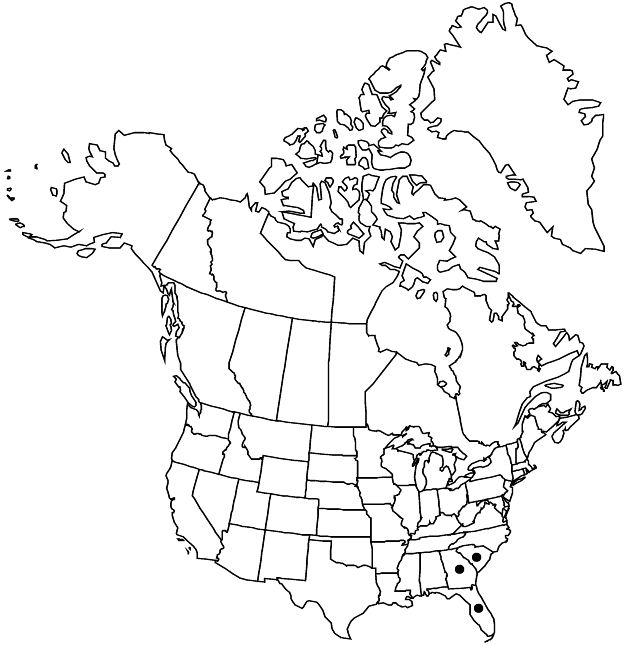Crataegus lepida
Biltmore Bot. Stud. 1: 36. 1901.
Shrubs, 5–10 (–20) dm, dense and twiggy, branches not weeping except in larger specimens, capable of flowering at 3 dm. Stems: trunk bark dark gray, scaly; twigs: new growth appressed-pubescent, 1-year old brown, slender; thorns on twigs straight, 1–2-years old color not recorded, fine, 0.6–2 cm. Leaves late deciduous to wintergreen; stipules herbaceous, falcate, margins glandular; petiole length 15–30% blade, winged distally, pubescent, glandular; blade deep green, broadly obovate to ± isodiametric, 0.6–1.5 cm, coriaceous, base abruptly contracted, lobes 0 or 1 per side, subterminal, barely bumps, sinuses extremely shallow, lobe apex obtuse, margins minutely glandular-crenate to sometimes with conspicuous, glandular-scalloped teeth distally, veins 1 or 2 per side, apex obtuse or with slight apiculus, ± glossy, abaxial surface pubescent, especially on veins, adaxial very sparsely appressed-pilose young, particularly so on veins. Inflorescences 1–3-flowered; branches appressed-pubescent; bracteoles linear, gland-margined. Flowers 12 mm diam.; hypanthium pubescent; sepals triangular, margins ± entire, abaxially pubescent; anthers ivory; styles 3 or 4. Pomes yellow-green to yellow or orange, broadly ellipsoid to suborbicular, 8–13 mm diam., black gland-dotted, pubescent; sepals broken off or recurved; pyrenes 3.2n = 51, 68.
Phenology: Flowering Apr–May; fruiting Jul–Aug.
Habitat: Dwarf scrub, sandy areas including inland dunes
Elevation: 0–100 m
Distribution

Fla., Ga., S.C.
Discussion
Of conservation concern.
Crataegus lepida is a scarce, distinctive species occurring at scattered localities from central Florida to southern Georgia and South Carolina. A sterile specimen from Louisiana (Thomas 57507) may be this species.
In central Florida, plants of Crataegus lepida start their extension growth and flower in May, long after growth of other nearby plants has started, while further north anthesis about the second week of April is usual. The southern populations are also the most wintergreen in the species. Thus, the central Florida plants appear to be ecophysiologically distinct and should be investigated further. Particularly small-leaved specimens with numerous, small, sharp marginal teeth may represent C. garrettii of Murrill.
Crataegus lepida is a dwarf semi-evergreen shrub with dark, glossy, often suborbiculate leaves that are striking in the field. Larger specimens might be confused with C. egens.
Selected References
None.
Lower Taxa
"thin" is not a number."winged" is not a number."adnate" is not a number."dm" is not declared as a valid unit of measurement for this property.